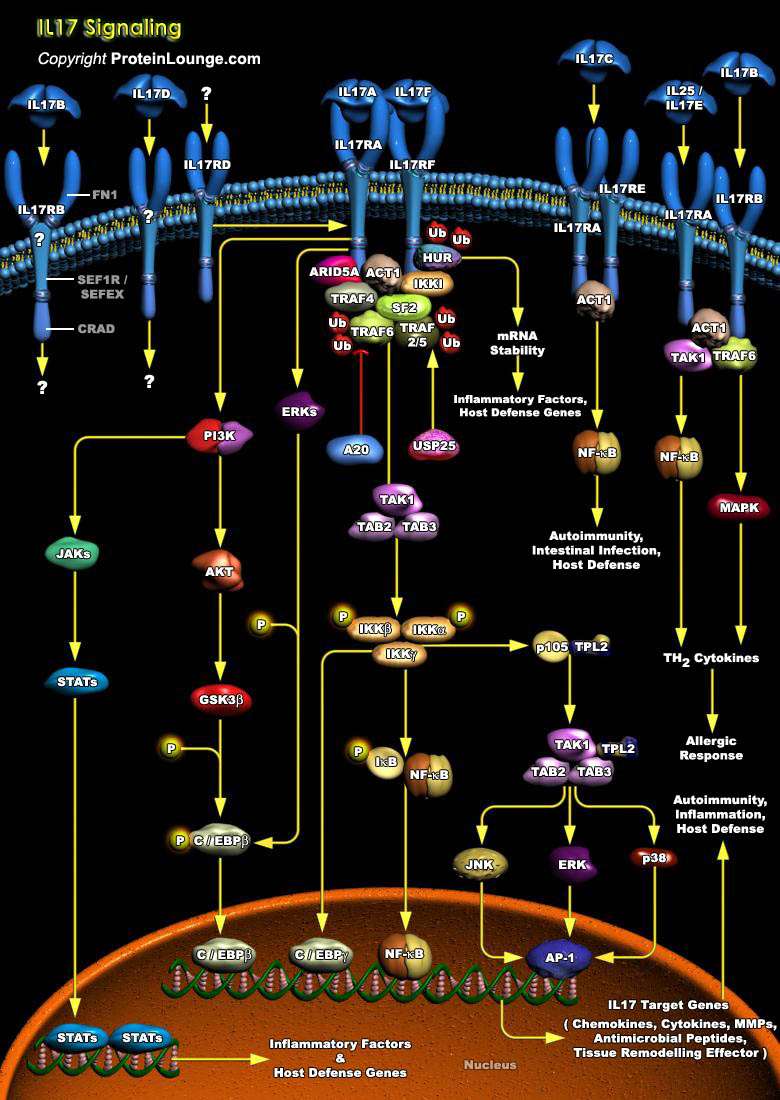
Cytokines are key messenger molecules in cell-to-cell communication and are involved in various aspects of the immune system such as maintaining homeostasis and mediating and resolving pathologic conditions. IL-17 (Interleukin-17) family is a group of cytokines sharing homology in amino acid sequences with highly conserved cysteine residues critical to their 3-dimensional shape. IL-17, the signature cytokine secreted by Th17 cells, is required for host defence against extracellular bacterial and fungal infections, and contributes to the pathogenesis of various autoimmune inflammatory diseases. IL-17 has become an important target for treating different forms of inflammatory disorders. Recent clinical trials with agents that target IL-17/IL-17R, the upstream regulation[..]
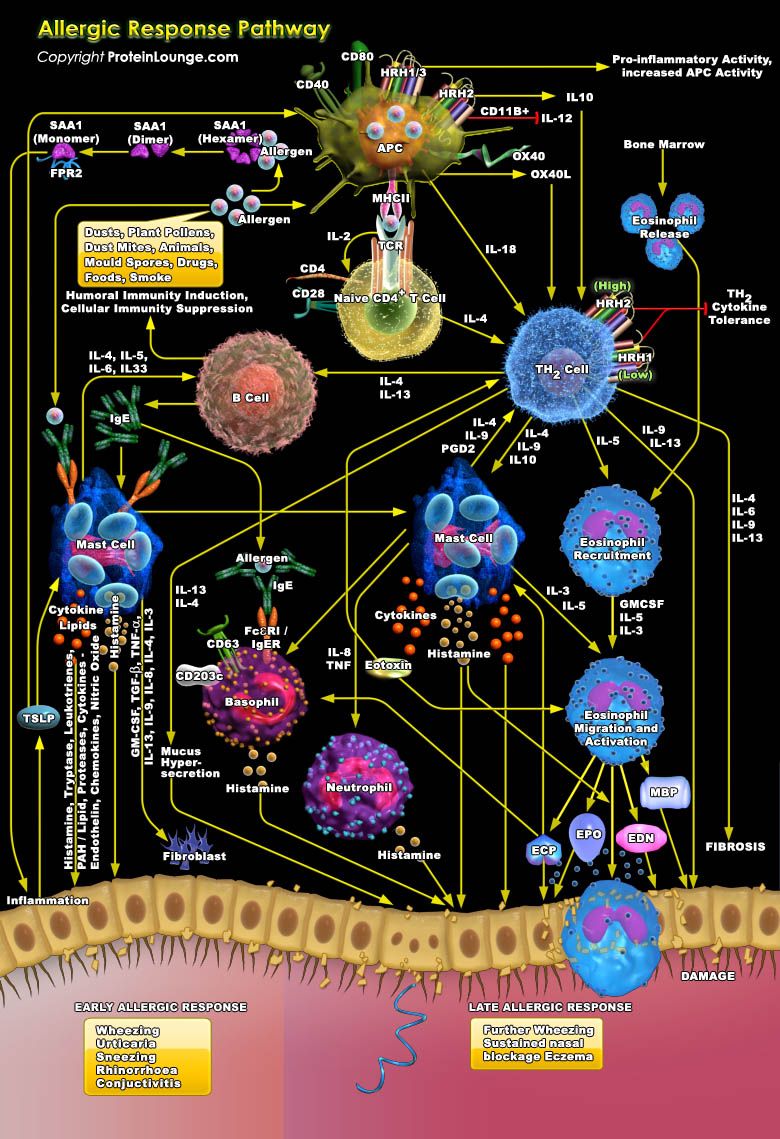
Atopy or Allergic disease is a complex familial disorder with multiple manifestations, including allergic asthma, rhinitis, conjunctivitis, and dermatitis. Allergens are derived from different sources such as cockroaches, ragweed pollens, and house dust mites. The primary immune cell lineages involved in the initiation and progression of allergic inflammation include DCs (Dendritic Cells), mast cells, basophils, eosinophils, and Th2 (Type-2 Helper T) cells. The responses of these principal players in allergic reactions are influenced by the local environments in which they reside. When susceptible or atopic individuals are initially exposed or sensitized to allergens, Antigen-presenting cells capture, process, and present allergen as an allergen-derived peptide[..]
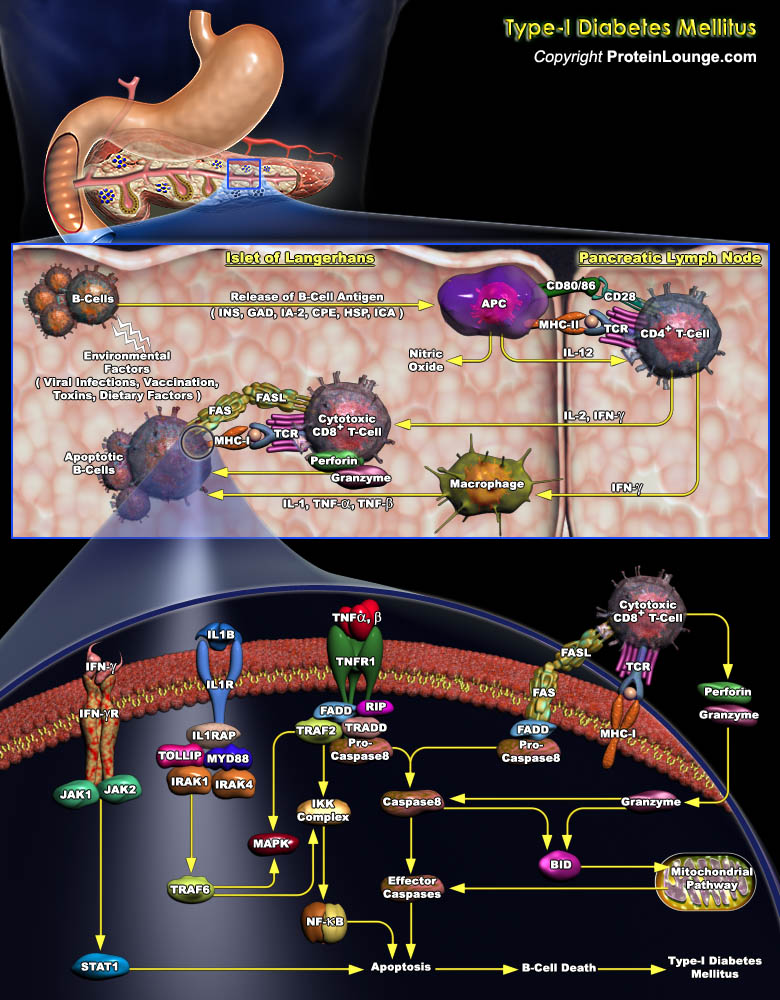
Type 1 diabetes, formerly termed IDDM (Insulin-Dependent Diabetes Mellitus), is a chronic organ-specific autoimmune disorder caused by proinflammatory autoreactive CD4+ and CD8+ T cells, which mediate progressive and selective damage of insulin producing pancreatic beta-cells. The reduction of beta-cell mass leads to a lack of insulin and thereby loss of blood glucose control. To date, it has not been possible to prevent the autoimmune response to beta-cells in human, due probably to its unknown aetiology, although it is known that development of T1D is genetically controlled and thought to be initiated in susceptible individuals by environmental factors such as virus infections (Ref.1 & 2).Epidemiological studies have shown that antibodies against beta-cell[..]
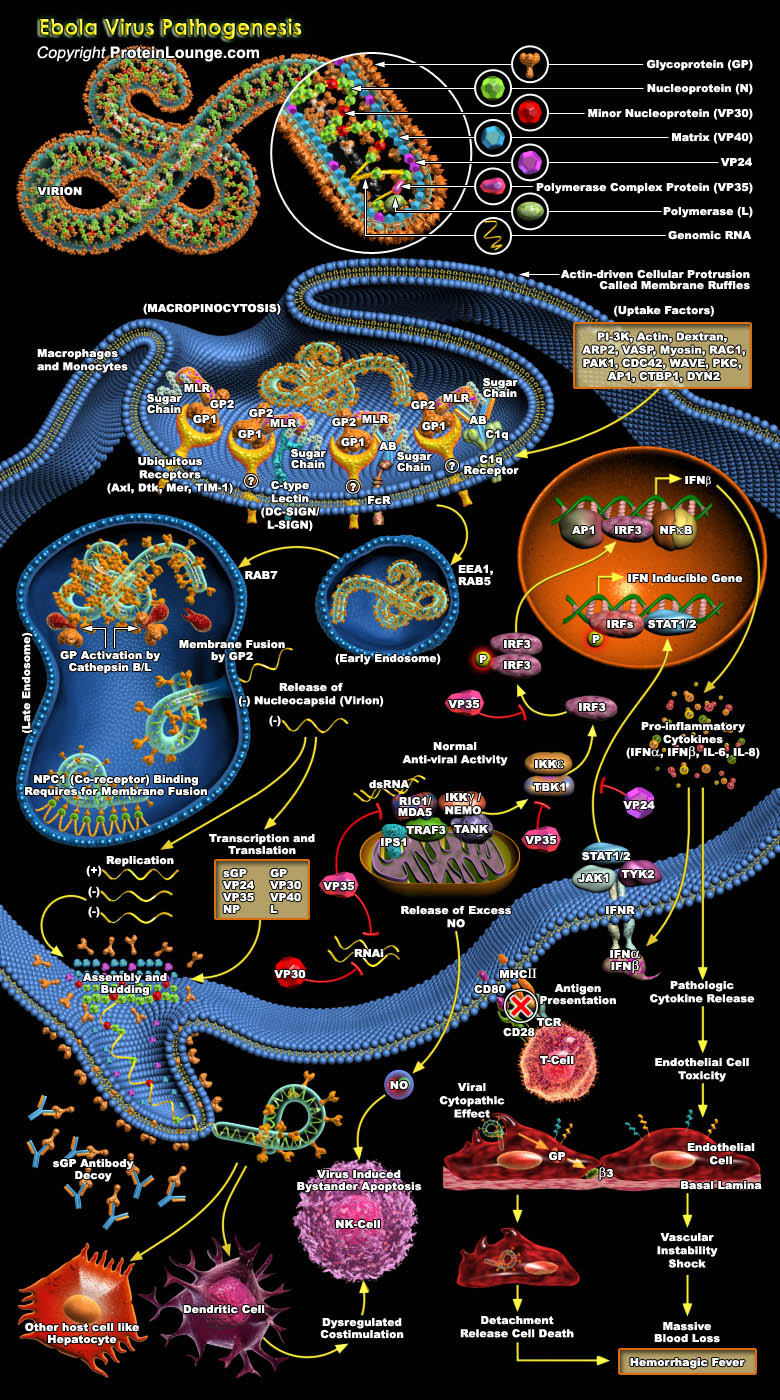
Ebola virus is an aggressive pathogen that causes a highly lethal hemorrhagic fever syndrome in humans and nonhuman primates. Typically, Ebola virus infection runs its course within 14 to 21 days. Infection initially presents with nonspecific flu-like symptoms such as fever, myalgia, and malaise. As the infection progresses, patients exhibit severe bleeding and coagulation abnormalities, including gastrointestinal bleeding, rash, and a range of hematological irregularities, such as lymphopenia and neutrophilia. Cytokines are released when reticulo-endothelial cells encounter virus, which can contribute to exaggerated inflammatory responses that are not protective. Damage to the liver, combined with massive viremia, leads to disseminated intravascular coagulopathy. The[..]
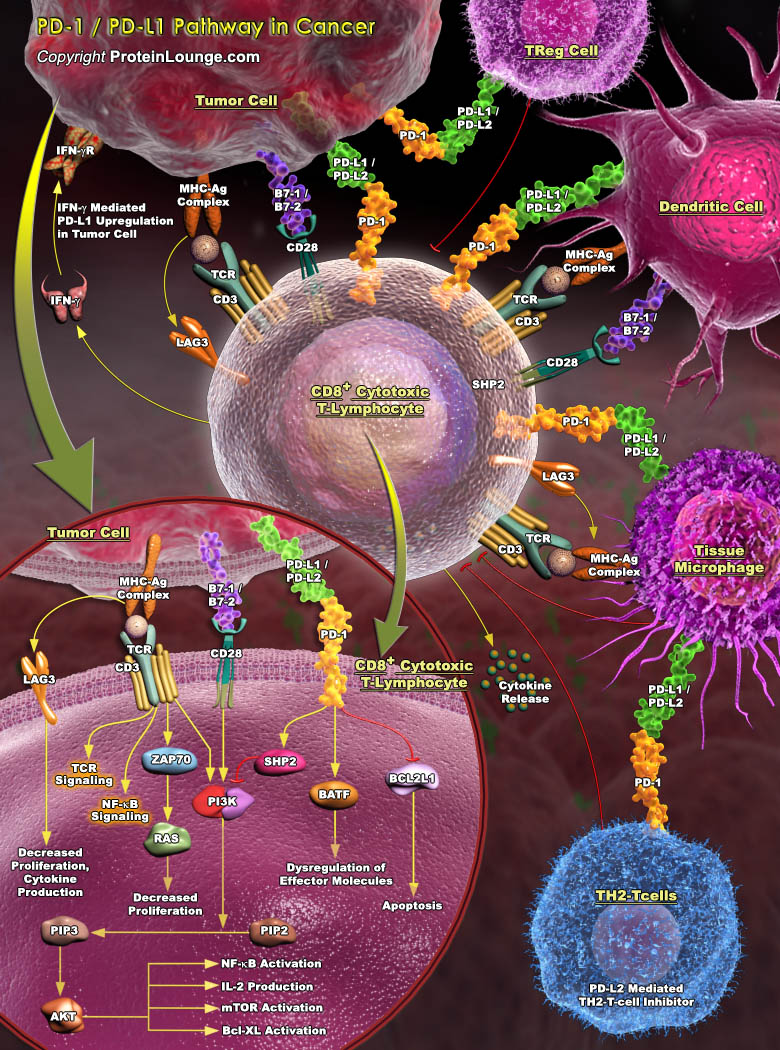
Immune checkpoints refer to a plethora of inhibitory pathways hardwired into the immune system that are crucial for maintaining self-tolerance and limiting collateral tissue damage during anti-microbial immune responses. Checkpoint molecules include Cytotoxic T Lymphocyte Antigen-4 (CTLA-4), Programmed Death-1 (PD-1), Lymphocyte Activation Gene-3 (LAG-3), and T-cell immunoglobulin and Mucin protein-3 (TIM-3) as well as several others (Ref.1). PD-1, an immunoinhibitory receptor of the CD28 family, is a type 1 trans-membrane protein that encoded by the PDCD1 gene. The structure of the PD-1 includes an extracellular IgV domain, a hydrophobic trans-membrane region and an intracellular domain. PD-1 has two ligands: PD-L1 (also named B7-H1; CD274) and PD-L2 (B7-DC; CD273),[..]
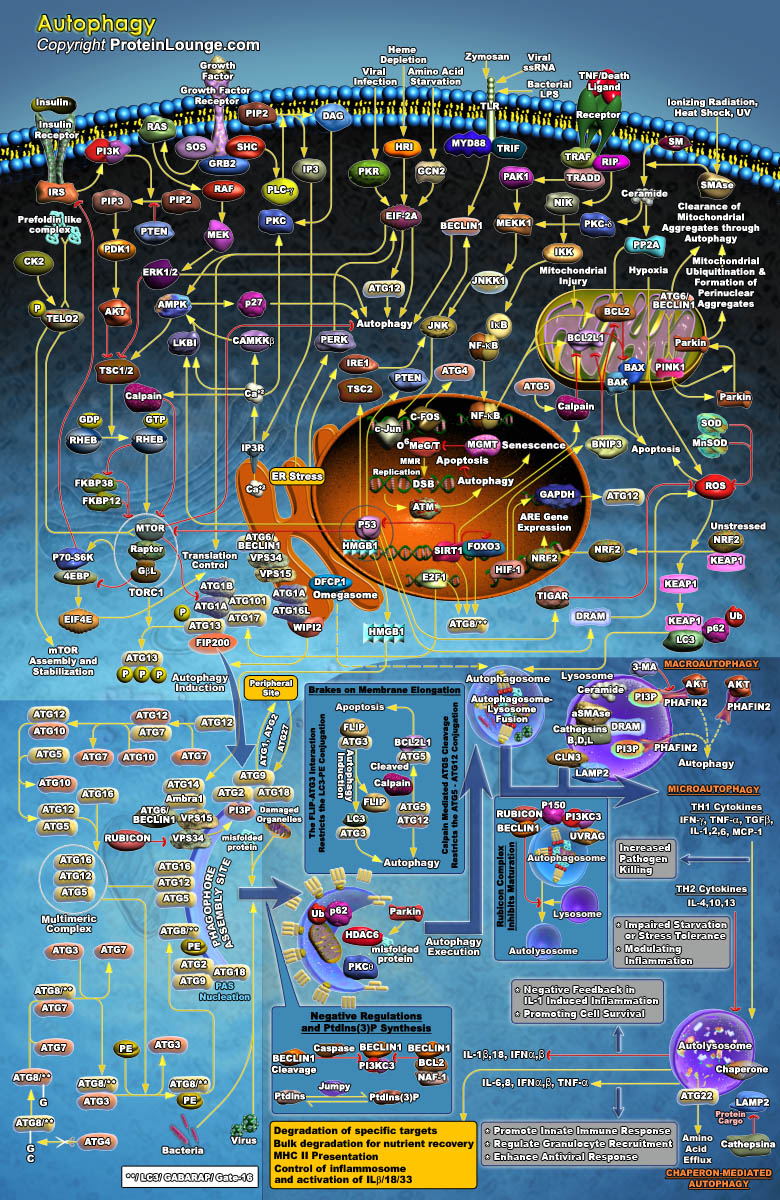
Autophagy is a process of self-degradation of cellular components in which double-membrane autophagosomes sequester organelles or portions of cytosol and fuse with lysosomes or vacuoles for breakdown by resident hydrolases. It also plays a housekeeping role in removing misfolded or aggregated proteins, clearing damaged organelles, such as mitochondria, endoplasmic reticulum and peroxisomes, as well as eliminating intracellular pathogens. Autophagy, or 'self-eating', is an adaptive process that enables cells to cope with metabolic, toxic, and even infectious stressors. Although the adaptive capability of autophagy is generally considered beneficial, autophagy can also enhance nutrient utilization and improve growth characteristics of cancer cells. Autophagy has[..]
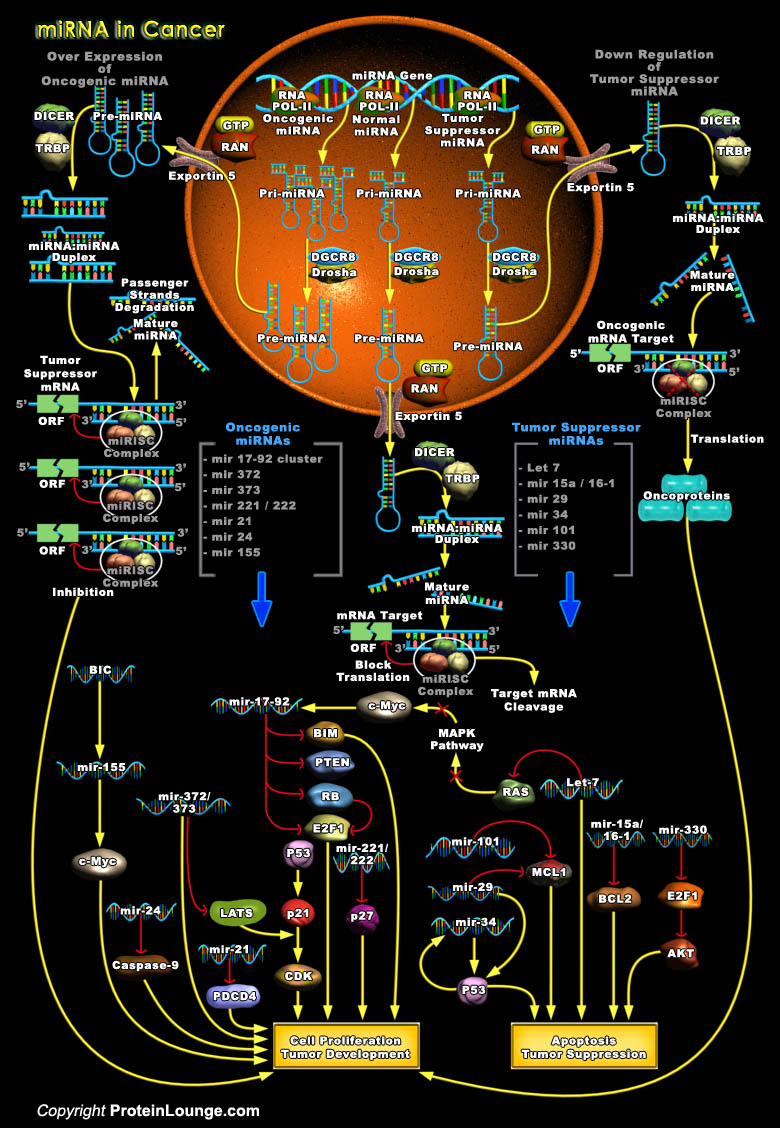
Over the last decade, a growing number of non-coding transcripts have been found to have roles in gene regulation and RNA processing. The most well known small non-coding RNAs are the miRNAs/miRs (microRNAs), which have been found to be involved in human tumorigenesis, revealing a new layer in the molecular architecture of cancer. Gene expression studies have shown that hundreds of miRNAs are deregulated in cancer cells, and functional studies have clarified that miRNAs are involved in all the molecular and biologic processes that drive tumorigenesis. miRNAs constitute a large class of phylogenetically conserved single-stranded RNA molecules of 19 to 25 nucleotides playing major role in post-transcriptional gene silencing by translational repression or mRNA cleavage[..]
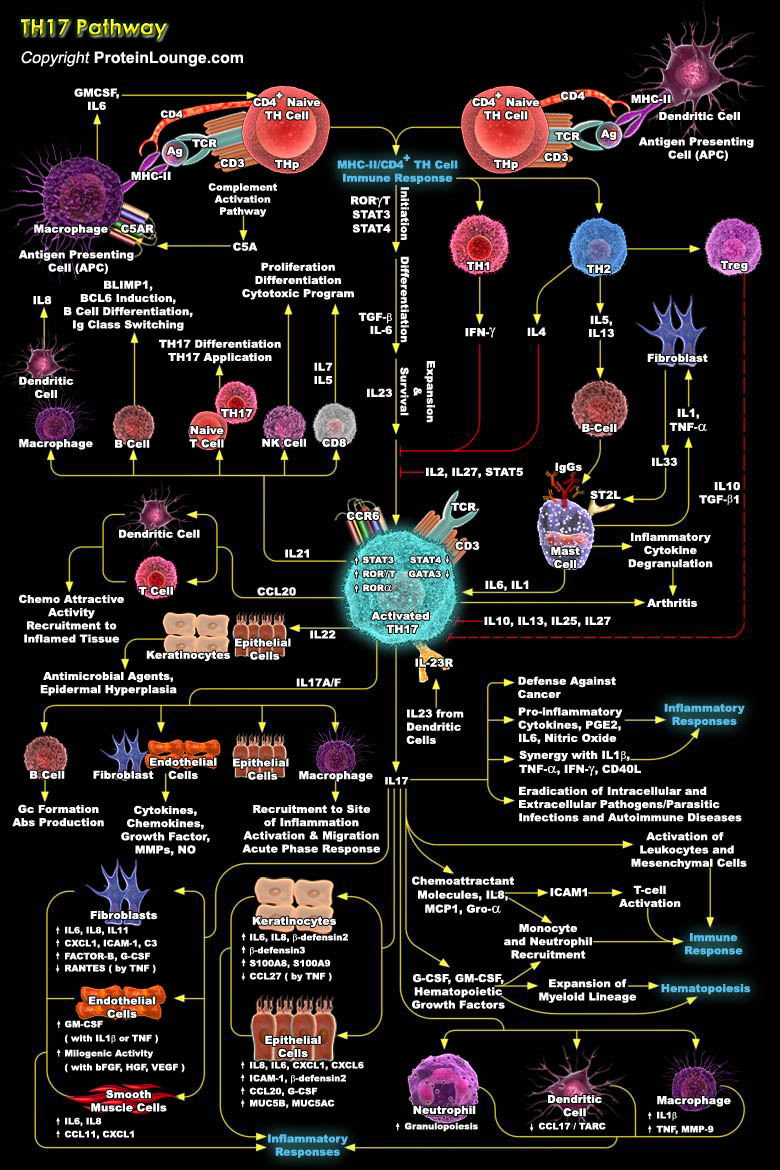
T cells acts as a workhorse for the adaptive immune system, with the job of orchestrating defences against microbial invasion. A subcategory of T cells, T helper cells, defends against microbes, also causes trouble by inducing inflammation in immune-mediated diseases. T helper cells become further specialized, or differentiated, and a type known as TH17 has recently stepped into the limelight. These cells produce a messenger molecule called IL-17 (Interleukin-17), and are notable both in providing defence against extracellular bacteria and in mediating inflammation. TH17 cells are a distinct lineage of proinflammatory T helper cells that are essential for autoimmune disease (Ref.1 & 2). Since CD4+ TH (T helper) cells are essential regulators of adaptive immune[..]
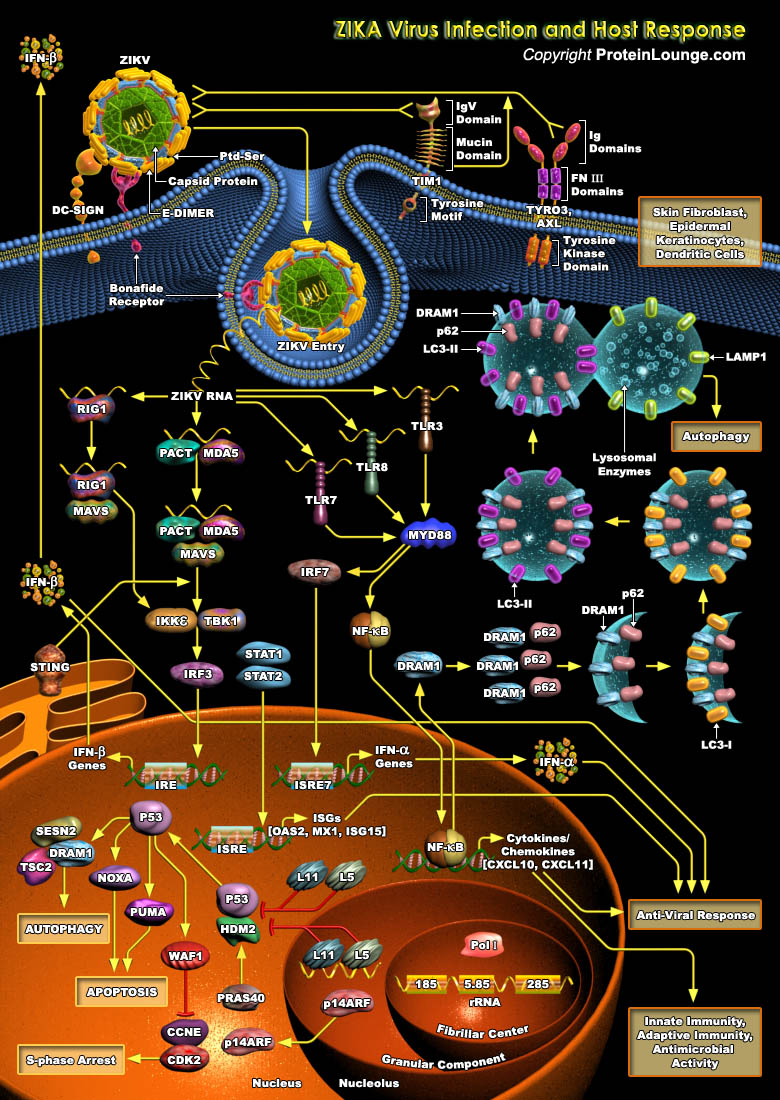
Zika virus (ZIKV) is an emerging arbovirus of the Flaviviridae family, which can cause microcephaly, a birth defect where a baby's head is smaller than usual. Additionally, it is associated with Guillain-Barré syndrome, a neurological disorder that could lead to paralysis and even death. Zika virus illness has been described as self-limited and moderate in severity with the common findings of malaise, headache, fever, joint aches, a maculopapular rash, and inflammation of the conjunctiva. However, an alarming number of birth defects, including microcephaly, have been attributed to Zika virus infection occurring in the first two trimesters of pregnancy (Ref.1 and 2). Zika virus is an enveloped, icosahedral positive single-stranded RNA virus and has a genome of 10 kb,[..]
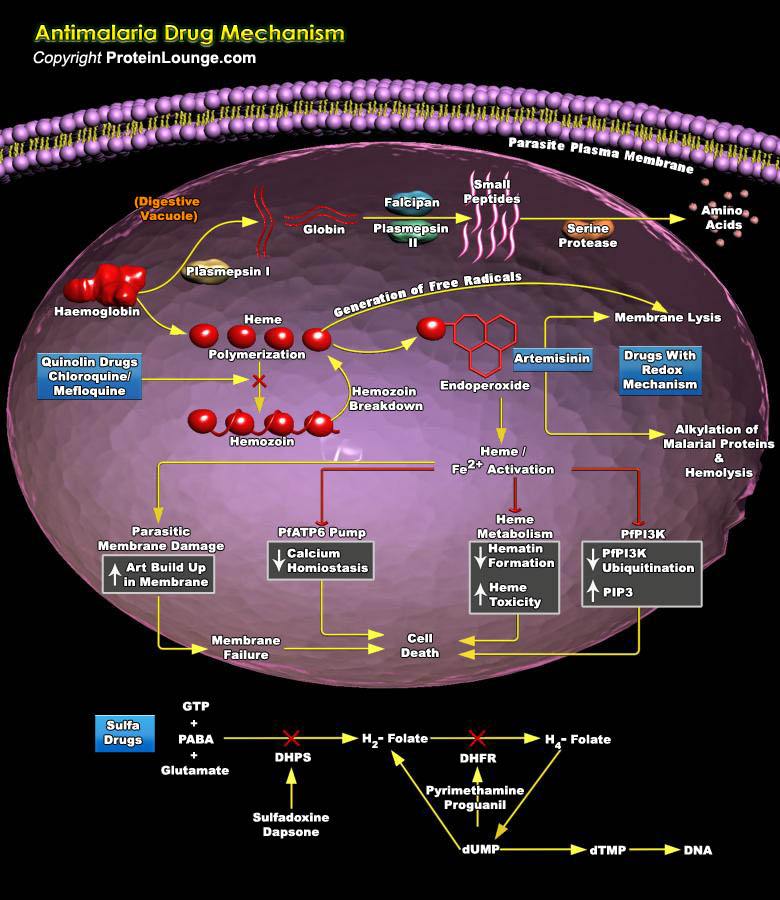
The control of malaria largely depends on drug therapies, and, to a lesser extent, prophylaxis. Most of the antimalarial drugs available currently have been in use for decades, but their use is now severely limited by the emergence and spread of drug resistance, primarily in Plasmodium falciparum, the malaria parasite that causes severe forms of the disease and most of the disease burden. Drugs in use today target different stages of the malaria life cycle, albeit the majority of them act on the intra-erythrocytic phases of development of the malaria parasite (Ref. 1). Some of the most widely used antimalarial drugs belong to the Folate antagonist class. These are basically nucleic acid inhibitors. Folate metabolism is the target of several[..]
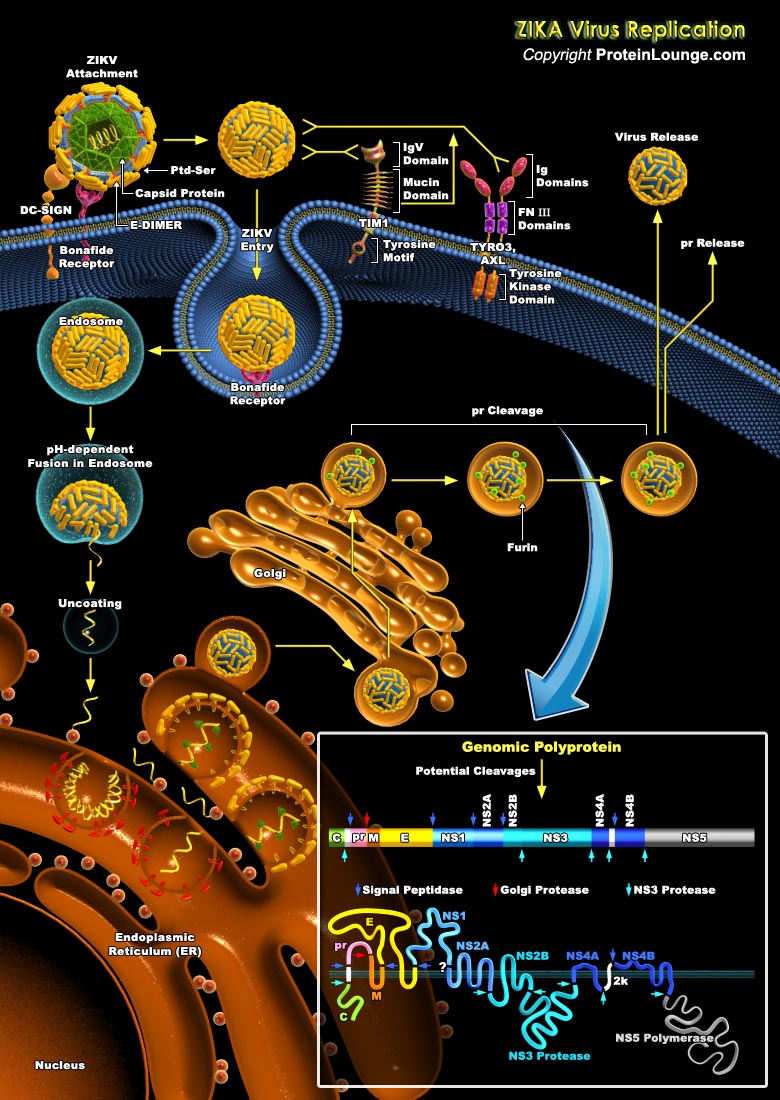
Zika virus (ZIKV) is an arbovirus of the Flaviviridae family, which includes dengue, West Nile, yellow fever, and Japanese encephalitis viruses, that causes a mosquito-borne disease transmitted by the Aedes genus. Zika virus has emerged as a severe health threat by virtue of its fast paced global spread and its associated morbidities, including microcephaly and Guillain-Barre syndrome (Ref.1). ZIKV contains a positive, single-stranded genomic RNA encoding a polyprotein that is processed into three structural proteins, i.e., the capsid (C), the precursor of membrane (prM), and the envelope (E), and seven nonstructural proteins, i.e., NS1 to NS5. Virus replication occurs in the cellular cytoplasm (Ref.2). Human dermal fibroblasts, epidermal keratinocytes, and immature[..]
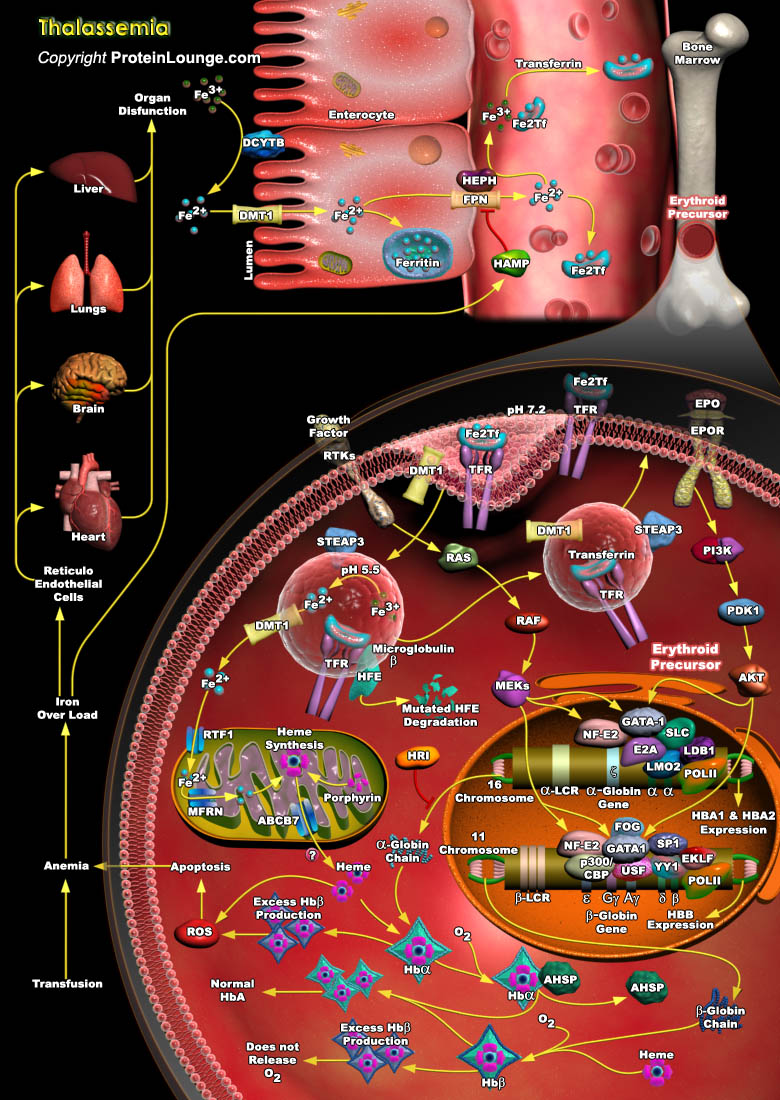
Thalassemia is one of the most deadly inherited blood disorders, characterized by abnormal production of hemoglobin and excessive destruction of red blood cells. It is a single-gene disorder that is passed from parents to child by autosomal recessive pattern of inheritance. Progressive iron overload and Anemia are the most salient and ultimately fatal complications of Thalassemia. According to the type of globin polypeptide chain that is underproduced, Thalassemia is generally classified into 3 major types: Alpha, Beta and Delta thalassemia, Beta thalassemia being the most fetal one. Globin protein is the main constituent of hemoglobin, which is a globular protein that consists of two Alpha and two Beta globin polypeptide chains, where each globin chain is associated[..]

